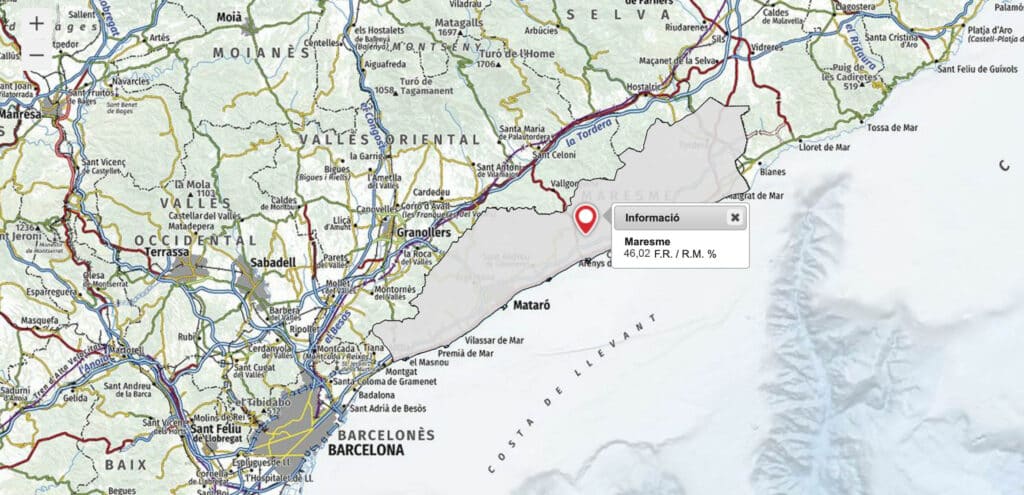The municipalities that exceeded 70% selective collection (Argentona and Arenys de Munt) have implemented efficient systems such as door-to-door collection
Seventeen of the twenty-eight municipalities in the consortium exceeded 50% selective collection in 2022
46% of Maresme’s municipal waste was collected separately in 2022. In absolute figures we are talking about 105,477 tonnes, which represents 0.38% more than in 2021; a timid increase that shows a stabilization of the selective collection rate.
“The large municipalities are those that today still have the greatest room for improvement,” explains the director of Maresme Circular, Carles Salesa, who says: “We must move forward in the implementation of more efficient collection systems such as door-to-door or smart containers if we want to reach the 55% recycling rate set by the European Union by 2025.”
In fact, the two municipalities in the county with the best selective collection results and which exceed 70% have implemented the door-to-door collection system: Argentona (86.59%) and Arenys de Munt (78.54%).
Slight increase in packaging collection
This year there is a novelty in the data accounting, which is that domestic debris has not been included, following the regulations of the European Union. If it had been included, as it used to be, the selective collection ratio would have increased to 48.58%. Debris, therefore, regardless of its origin, is now counted exclusively on the construction and demolition waste balance sheet.
Of the four main fractions of selective collection, organic, glass and packaging have increased slightly compared to the previous year. The fraction with the greatest increase is packaging (2.7%), followed by organic (2.09%) and glass (1.43%). Paper, on the other hand, decreased by 1.42%.
Separate collection, municipality by municipality
According to the statistics of the Catalan Waste Agency, seventeen of the twenty-eight municipalities in the consortium exceeded 50% of selective collection in 2022. Apart from the two towns mentioned, we find: Cabrera de Mar (66.37%), Canet de Mar (62.70%), Teià (62.59%), Sant Pol de Mar (58.89%), Sant Andreu de Llavaneres (58.77%), Sant Vicenç de Montalt (57.69%), Alella (55.54%), Arenys de Mar (52.96%), Dosrius (52.85%), Vilassar de Mar (52.79%), Premià de Dalt (52.14%), Tordera (51.78%), Vilassar de Dalt (51.20%), Òrrius (50.55%) and Cabrils (50.39%).
Next, six municipalities exceeded 40% in selective collection: Caldes d’Estrac (47.41%), Sant Cebrià de Vallalta (46.95%), Palafolls (44.18%), Malgrat de Mar (43.74%), Calella (42.44%) and El Masnou (41.71%); followed by those municipalities that do not reach 40% and which this year, with the change in the data accounting have increased to five: Pineda de Mar (39.53%), Premià de Mar (39.34%), San Iscle de Vallalta (36.37%), Mataró (35.01%) and Santa Susanna (26.42%).
Less generation of municipal waste
Regarding the generation of municipal waste in the Maresme, in 2022 the generation per capita has been placed at 1.42kg/inhab/day; 1.39% less compared to 2021.
The average for Catalonia as a whole is 1.35kg/inhab/day, while the average selective collection rate is 45.33%. The Maresme generates more waste and separates it slightly better than Catalonia as a whole.
Complete statistics at http://estadistiques.arc.cat/ARC/

Visualization by county of selective collection in Catalonia in 2022



